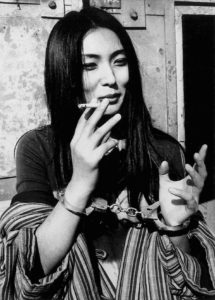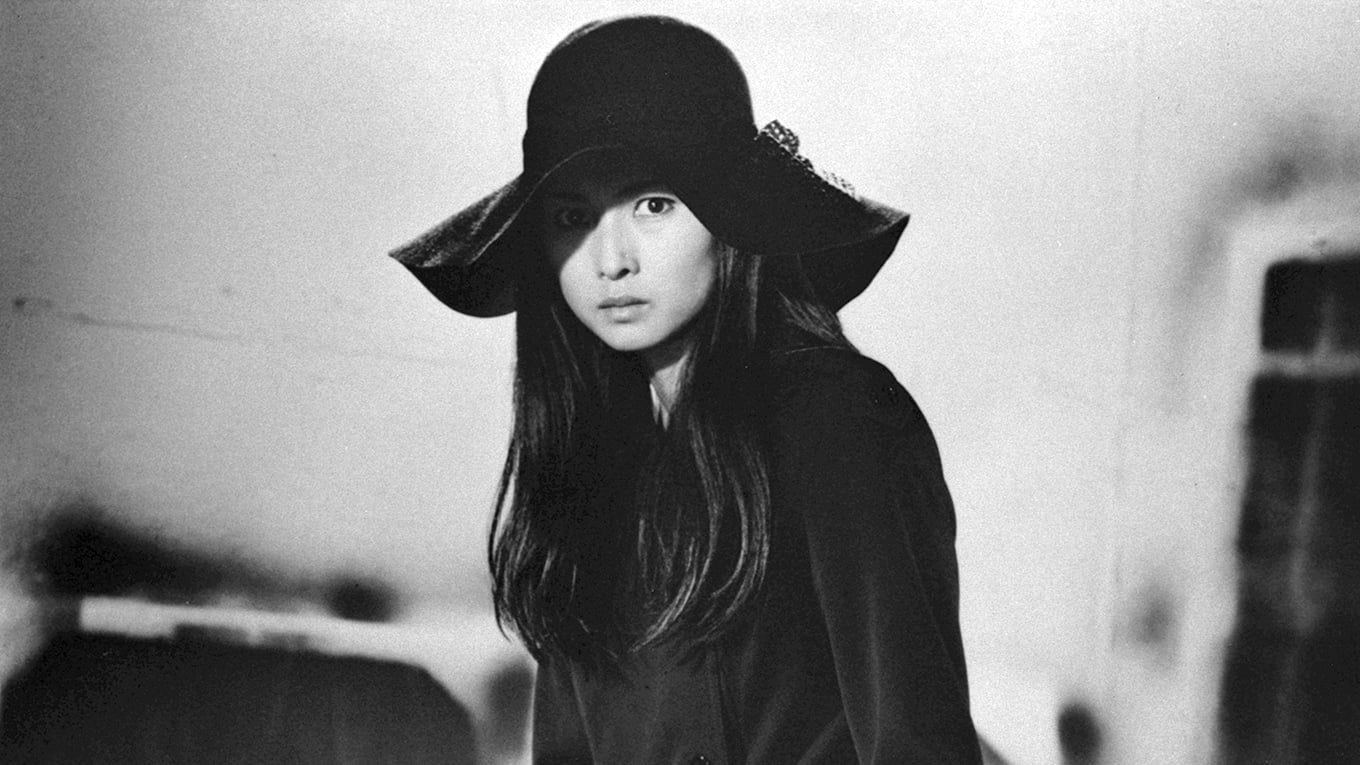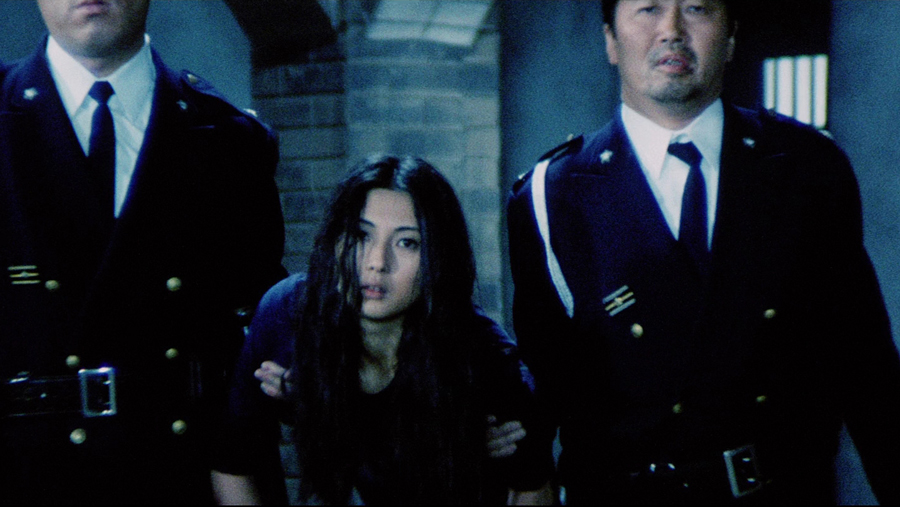
It’s hard to remember when the “women’s prison” subgenre was iconoclastic, given its popularity these days. But, before we had series like Orange is the New Black, Vis a Vis, or Wentworth, we had the Japanese Prisoner Scorpion films. Though the genre first appeared during the silent era, it was often simply considered exploitation, with no more artistic merit than pornography. Furthermore, based on some retrospective reviews, many still view the Scorpion movies as such.
However, the original four films of the series, which first appeared between 1972-1973, have recently developed a sizeable cult following among Japanese movie buffs and horror fans alike, most likely due to the entire series dropping on streaming site Shudder. They also received a restoration into a collection by Arrow Video – an influential purveyor of cult classics. To the mainstream, it was as if they had been locked in a vault since the 70s and for the fringes of cinema buffs, but Shudder pulled them out and put them on display for the right, general audience to finally see.

Based on the manga by Toru Shinohara, entitled Sasori, the series follows the wrongfully imprisoned Nami. In each film, she is repeatedly tortured – physically and sexually. She slowly takes her brutal, medieval revenge on each of her tormentors, over and over again. Adopting the mantle “Sasori” (or “scorpion), her persona is established and enduring ever since. It’s not so simply “revenge on the patriarchy”, however, as some of the most vicious villains are senior female prisoners. Additionally, expressing these films are exploitative is definitely not without substance. The first movie, which was what sucked viewers in the begin with, is especially guilty of sexual exploitation. What holds true throughout all four movies is Sasori herself, anchored by an astonishing, consistent performance by Meijo Kaji, who comes through as just as much of a hero as the character she is portraying. Her most impressive quality is when we consider she has minimal dialogue throughout all four films, and barely changes facial expressions – Kaji’s acting is almost entirely through a presence in a powerful demeanor.
While I fully support watching the series in chronological order, I don’t believe they are all created equal. Before we begin our list, I want to do an honorable mention of the manga on which the series is based. An official English translation of the manga is currently difficult get hold of, but various websites currently have online scans available. At a staggering 48 chapters, we are introduced to Nami Matsushima and “The Palace,” the prison in which she is incarcerated. Nami is an immediately gripping protagonist, and throughout the series, she forms alliances with other prisoners, antagonisms with both guards and prisoners, and manages various escapes. Although The Palace is the main setting, we see her out in the real world, fighting the same battles, as if to say that the prison is simply a metaphor for the world itself. The manga gives birth to this character and this world, but it is director Shunya Ito who truly brings it to life in the following four films.
4. Female Convict Scorpion: Beast Stable

Let’s start out with the weakest film in the series – the third entry. I am not alone in my opinion: if one scours the reviews on Shudder, this same view is repeated over and over again, all basically saying the same thing: while it’s the weakest in the series, it’s still a bloody good time, and deliciously rewarding for fans of the series. The first take place entirely outside of prison, it shows that our hero transcends the women’s prison subgenre and fits in the real world.
The movie opens with a subway scene, in which Sasori is sitting in a crowded metro train car, and police enter in order to catch her. The ensuing violence results in a policeman’s arm caught in the subway doors and hacked off (by Sasori) with a knife. Nami is out in the free world, but on the run from the police and being hunted by the villainous detective, Kondo, whose arm she hacked off. She hides in the home of a somewhat disturbed sex worker, whose brother attempts to sexually assault Sasori. After Sasori exacts some satisfying revenge, it is revealed that the brother is a serial sexual offender.
The only reason this film is the lowest on the list is that the others are even more artistic and satisfying, but being the weakest entry in this foursome still makes it better than most movies out there.
3. Female Prisoner Scorpion: #701’s Grudge Song

The last to be made, this is perhaps the most controversial among fans, mostly because Shunya Ito was replaced by Yasuharu Hasebe. It also deviates from the previous three in style. However, I have a soft spot for the series underdog. Grudge Song adds a unique layer to the overall story. Sasori continues to be the hero we need and deserve, speaking quietly but killing loudly. Like its predecessor, the prison is not the main setting, but the ending brings it all back to the beginning when Sasori is first sent to prison and must enter this world of extreme violence and torment. Her final revenge is exceedingly satisfying, even as she is about to be executed. Hasebe also introduces some interesting new stylistic choices, which come off to some fans as less bold, but I find simply delicious.
Years after the events of Beast Stable, Nami is still on the run from the police. Now taking refuge in a strip club, Nami’s fatal flaw appears to be the temptation to give up being The Scorpion. She meets Kudo, with whom she finds herself enamored. This is why Grudge Song adds an additional layer — we see a softer side of her, the one she always suppresses in order to feel no compassion for her victims.
Kudo and Nami go on the run together, and Kudo is captured. The question arises: will he crack under torture (which is very graphic) and reveal Nami’s location?
Seeing Sasori almost return to the Nami we saw only in flashbacks actually makes the final revenge scene of this film especially satisfying. There is a shot of her in the theatre which has been posted hundreds of times to Instagram under relevant hashtags. Though some say this film lacks the artistic bang of Ito’s three entries, it’s definitely worthy of the Scorpion name.
2. Female Prisoner #701: Scorpion

The film that started it all. We are introduced to our larger-than-life hero, a woman who takes more beatings – figuratively and literally – than should be humanly possible, and somehow always comes out on top. One reviewer on Shudder says, “Why do people keep thinking they can mess with this woman?” As someone who had a less-than-perfect childhood (if I may insert my personal bias here), we absolutely need this hero in our lives. The first movie also introduces us to Shunya Ito’s special brand of cinematography and art direction. The non-linear storytelling, strengthened by surreal flashbacks, centered and symmetrical shots, emotion-inducing colors, and the constant use and atmospheric music, the first film in the series wins. The reason this entry is not higher on the list is because director Ito managed to surpass himself.
For a setup to the franchise, this is the perfect genesis to our heroine. She has fallen in love for the first time, but her boyfriend, the police detective, sets her up in a failed drug smuggling sting, and she is sentenced to hard time. In prison, she is given the number 701. The prison is run by male guards, who subject the women to constant sexual humiliation and abuse, as well as meaningless manual labor (such as digging holes for no reason). The senior female prisoners also enjoy tormenting Nami and her co-horts. Nami becomes Sasori, and partners with other lower-ranking prisoners to orchestrate both assassinations and escape. Though vengeance is hers, she is unable to escape her fate in prison.
1. Female Convict Scorpion: Jailhouse 41

It’s not particularly contentious to say the second film is the best. Reddit users and film critics alike agree that it tops the list. After the first film drew in viewers with a combination of cinematic creativity and shocking violence including non-stop nudity, the second dials down the exploitation significantly and instead relies upon artistic direction alone. There were certainly elements of the surreal in the first film, but the second is full of downright abstract cinematic techniques. There are many scenes throughout the film that are so surreal that it’s not always clear which moments take place in the real world, and which take place in Sasori’s mind – or if her mind is, in fact, the real world. Meanwhile, there is still plenty of nonstop, gratifying revenge.
After her first escape from prison, Nami is being held in solitary confinement, brought out into the daylight only for public humiliation. After a series of violent clashes between the prisoners and the guards, Nami and some others manage to escape. Each of the other prisoners is then given a backstory, which is how Shunya Ito manages to take the world created by the first film (inspired by the manga) and develop it into more than the sum of its parts.
The pack of escaped female convicts are on the run, coming across both the hunting police force and average male sexual predators out in the world, taking vengeance, seemingly, on the entire human race. While Sasori is still our hero, and takes centre stage, Jailhouse 41 essentially elevates the story on a much grander scale, and gives the viewers both the catharsis of revenge and the catharsis of freedom.
More Lists
Ranking Live-Action Performances of Junji Ito’s Tomie
Today, I will explore and rank an iconic character of the horror manga: Junji Ito’s Tomie. Tomie Kawakami is one of Junji Ito’s most popular characters and has become a…
Extreme Cinema of 2023 – Some of the Best Releases of this Year
2023 has been quite the year for new releases, from sci-fi thrillers, to splatter horror, to sequels and remakes out the wazoo, the year has seen a wide variety of…
16 Top Femme Fatales list – Sexy and Deadly in Equal Measure
The femme fatale is one of the most compelling and enduring archetypes in film history, captivating audiences with their blend of beauty, mystery, and danger. These enigmatic women are uniquely…
Black Horror Part 2: 18 Horror Films Featuring Good Roles for Black Actors
Welcome to Part 2 of our series highlighting Black Horror! For Part 2, we have compiled a list of films featuring black leads, most of which are newer releases, but…
21 Gory Anime to Sink Your Teeth Into
Like a match made in heaven, gore and horror go hand in hand like strawberries and cream or other relevant simile and, undoubtedly, some of the best representations of gore…
Shocktoberfest 2022 – My Personal Halloween Watch-List (Week 1)
Week One Welcome to Shocktoberfest 2022, the only horror movie festival curated by me! This is a list of movies I watched to prepare for Halloween, plus a thought or…
Voting member of the Independent Spirit Awards. Charter subscriber to the Criterion Channel. Silent and pre-code horror enthusiast. In my “real” life, I’m a human rights activist, social scientist, and burlesque performer





